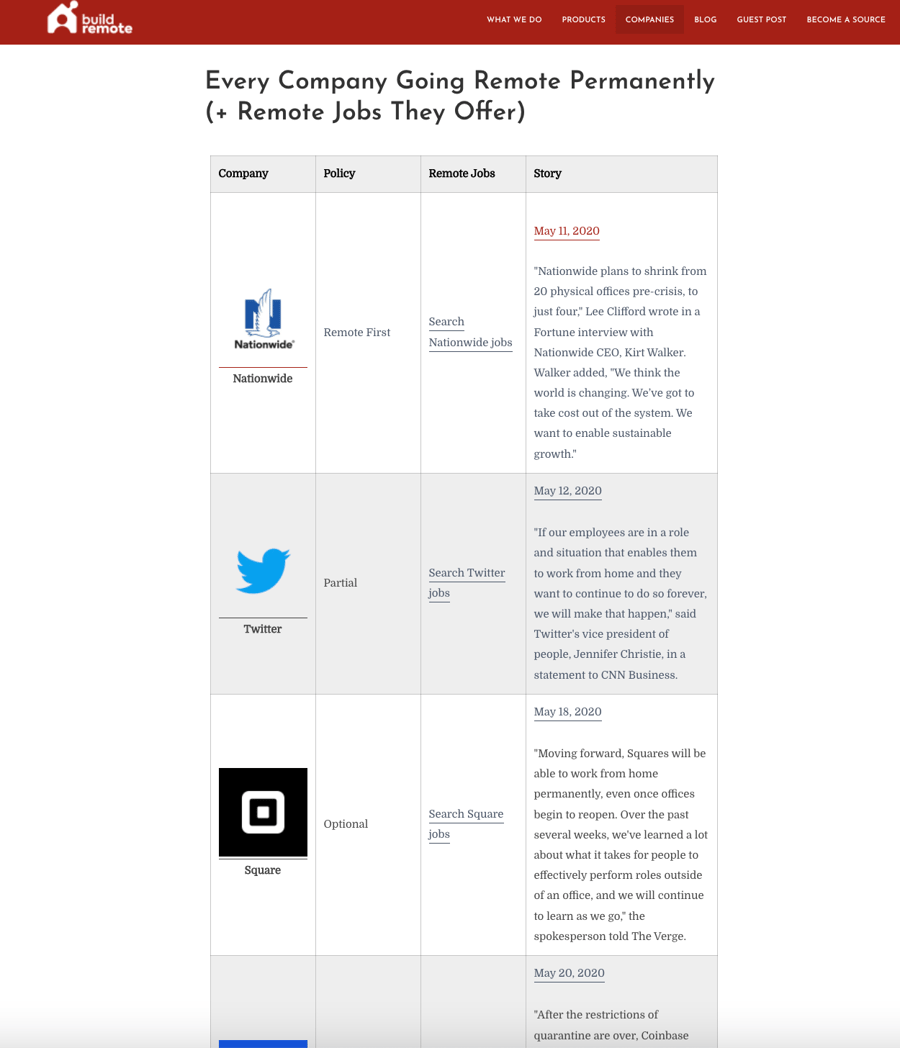The Genuine Marketer’s Approach To Backlinks



For businesses, it’s become more clear than ever that content is the cornerstone of a viable online presence. 81% of business leaders surveyed in the 2021 Content Management and Strategy Survey responded that content is a core business strategy, up almost 10% from the previous year.
As the importance of content grows, so too does the number of tools to come up with effective content. For many business leaders, the idea of learning, and mastering, these new techniques can be a bit daunting, since (on top of the logistics of running a business) they now must learn about SEO, blog posts, affiliate links, and more.
But, for businesses, investing time and energy in the evolving culture of content is worth it. The key to making this investment manageable is breaking down exactly how to create quality content. Our company has years of experience in helping companies create authentic and valuable content, so we’ve seen what works. Now, we want to focus on one element of SEO strategy that at first glance, may seem hard to develop on your own: the backlink.
But, fear not, with a bit of strategy and execution, you can make the coveted backlink happen for you using our guide, which includes actions to take now. Read on to find out how to get quality backlinks to your company site.
Some Background On Backlinks…
Backlinks are links to your site from another website. A backlink essentially acts as a type of recommendation or referral for your business from another source.
Consider a friend’s restaurant referral—if that friend is a great cook with excellent taste, you’d trust their recommendation. The same goes for backlinks; if the site that backlinks to yours is a trustworthy one with a high domain authority, that will only lend more confidence to yours. For example, if a national newspaper with a robust editorial process backlinks to your site, there is inherent trust that your site—and the specific linked article—is authentic and contains good information.
Unfortunately, like so many SEO tactics, the quest for backlinks has been watered down by people (often marketers) trying to get a quick, easy connection. You may have seen this type of spammy outreach yourself, such as when a marketer sends out an impersonal email that feels like they simply filled in a template without actually having a genuine interest in your company. (And, oftentimes, these types of emails land in the spam folder, left unread and ignored.)
Brian Dean, a popular SEO strategist, has a really helpful breakdown of where these request emails go wrong, and provides some tips on how to get them right. His approach emphasizes the need to personalize and offer value to the recipient.
Once you do get your backlink, search engines, like Google, will sort it into one of four categories: “nofollow,” “follow,” “sponsored,” and “user-generated content.”
Nofollow links are ones that Google and other search engines do not count in page rankings, and therefore do not count as endorsements of that site. The nofollow system was set up in an age when spam responses to blog posts were popular, and comments with meaningless links became easy to leave. A nofollow link, however, can still add value with their ability to increase traffic and exposure to your business.
More recently, the link tracking system has evolved beyond simply ignoring the ranking of link-building tactics by creating two more link designations: sponsored, used to designate a link that has been paid for, and user-generated content, most often used for forums and comments. With these two link types, websites have more options to help define the exact link type being used.
Still, even with these improvements in categorization, the best backlink remains the same: a high-authority follow. These are backlinks obtained through well-written and positioned content that is linked to on high-caliber websites.
A recent example is this content piece, which presents an up-to-date collection of companies that are going remote permanently. Based on the merit of the content, not outreach, this article was linked to by The New York Times, CNBC, The Guardian, and more. We've also received similar high-authority backlinks for other clients based on the quality of content (from the likes of Forbes & QuickBooks), all without the need to conduct email outreach to gain them.

So, with our background set, what can you do to get quality backlinks now?
How much could your company grow with growth content?
Calculate your expected growth in organic visits based on the average Nectafy client.
Get all these numbers in your inbox.
How To Get Backlinks From High-authority Sites: 5 Steps To Take
Here are five actions you can take to get your own backlinks without employing email outreach, spam, or other tricky tactics.
1 Figure out your expertise.
Determine your company’s specific areas of expertise within your industry. Whatever they are, lean into them.. These are areas in which you can begin to establish yourself as an expert or source that others will turn to,and cite.
2 Become a primary source.
Once you’ve nailed down your specific areas of expertise, start to plan content unique to your business. You might want to conduct a survey and send it out via Survey Monkey or Google Forms. Or collect your own data and write a report. You could also interview some other experts in the field and feature their words of wisdom in a post. By offering new insights on a topic, you can become a primary source that others link to.
3 Begin crafting posts.
There are lots of post types—we cover 16 of the most effective here. Some types may attract more backlinks than others, so if you’re looking for links, try these out:
- Living post: These posts that present industry information that is continually updated as needed, either with new information or current links. Because the details are kept up-to-date, the likelihood for attracting backlinks is higher.
- Template post: Offering readers a guide on how to create a template for something specific to your industry (and even offering a downloadable one) can be a great way to garner backlinks.
- 5x, or Pillar, post: These 3,000-word posts attract backlinks when they are carefully planned, researched, and executed. If you have a topic that warrants a more in-depth exploration, a 5x post can be a great way to showcase unique and interesting information.
- Key performance indicator (KPI) post: This type of post showcases your thoughts and findings with regard to measuring results in a specific area. For example, you could share your KPIs related to social media, or perhaps look at KPIs in specific departments.
4 Show your research.
Whatever type of post you create, use your own robust research to position yourself as an authority on the topic. This is where you can do your own backlinking and show readers just how extensively you’ve explored the topic.
5 Add value.
To attract backlinks you’ll have to provide something that will help readers, whether it’s original information or a unique, expert perspective. You’re not necessarily trying to sell something with every post, so consider skipping that aspect on a post to attract more backlinks.
At Nectafy, we believe that excellent content attracts excellent backlinks. So with a bit of forethought and good execution, there should never be a need to buy backlinks or send out the dreaded spammy email request.
Need help crafting informative, original content? Read more about Nectafy’s Growth Content formula, or reach out to see how we can help!

